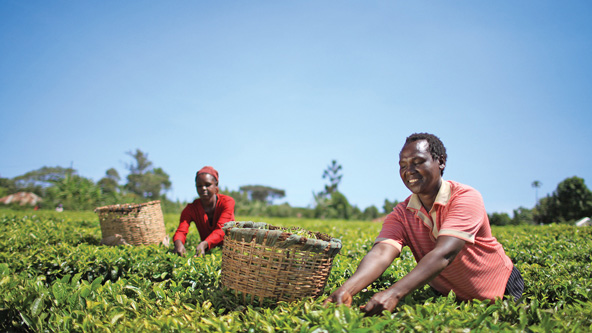
Kiva’s Crowdfunding Platform Transforms Into Hub for Impact Investing and Financial Inclusion
Kiva’s new strategy extends far beyond the organization’s original mission and legacy as a crowdfunding platform for microfinance. Can it succeed and still retain its original spirit?
In 2003, Jessica Jackley was a 25-year-old staff member of Stanford Business School’s Public Management Program when a lecture by Muhammad Yunus upturned her life.
Yunus popularized the microfinance solution to global poverty by founding Grameen Bank in Bangladesh. Poor people in low-income countries typically lack the collateral and credit history that most financial institutions require to give them a loan. The microfinance model sought to develop a sustainable, market-driven approach of lending to poor people, especially aspiring entrepreneurs, small amounts of money on friendlier terms than typical moneylenders. Yunus would go on to win the Nobel Peace Prize in 2006 for his efforts.
Jackley decided to quit her job and move to East Africa to experience microfinance firsthand. Her husband, Matt Flannery, a Stanford graduate working as a computer programmer at TiVo, joined her for an extended visit a few months later.
“I wanted to create a way for our friends and family to experience these new stories of entrepreneurship,” Jackley writes in her 2015 autobiography, Clay Water Brick. “And then I wanted to give them a way to respond differently too—for the first time, not with a donation but with a loan.”
As Kiva tinkered with its operating model, it also confronted a broader debate about microfinance as a tool for poverty alleviation. Critics pointed to the high interest rates and aggressive tactics of MFIs, and noted that borrowers often became saddled with debt. In 2010, more than 80 indebted borrowers (unrelated to Kiva) in Andhra Pradesh, India, committed suicide.
Randomized controlled trials (RCTs) also indicated that microcredit was generally not very effective for poverty alleviation. Only a fraction of the poor taking these loans were investing in businesses, and those who did were often unsuccessful. In a 2015 review paper, economists Abhijit Banerjee, Dean Karlan, and Jonathan Zinman concluded, “Summarizing and interpreting results across studies, we note a consistent pattern of modestly positive, but not transformative, effects.”
“Our founding assumption had been that microcredit was an effective tool for poverty alleviation,” Shah recalls. “But the RCTs were indicating that the actual impact, particularly on poor people’s household income and consumption, was generally not great. We therefore had a responsibility to ask: ‘How can we improve our impact?’”
Kiva’s leaders remained convinced that, even if the standard lending models of large MFIs showed limited benefits, Kiva’s lending showed impact in at least some settings. “If smallholder farmers take a loan for fertilizer, and their first payment is due in two weeks, they don’t have an opportunity to reap full benefits,” Grassano says. “But the impact can be significantly improved by offering the farmers flexible loan terms aligned with their cash flows.”
In focusing on real-world impact, Kiva’s leaders became more willing to accept the risks of trying new microfinance models. “We came to realize that our goal was not avoiding taking risks,” Guis says. “It was to get more intentional about the risks that we took, and to assess those risks relative to potential impact.”
But it would not be easy for Kiva to persuade its funders and MFI partners to adopt this mind-set, because they focused more on repayment rates than on the nuances of impact. And Kiva itself could not simply drop all the relationships and portfolios it had built over the years. Instead, Kiva started actively managing its new relationships by preferring MFIs and other organizations (such as educational institutions setting up loan programs for poor students) that were willing to experiment with innovative microfinance models with a high potential for impact.
It was not easy to persuade field partners and funders to participate in such experimental efforts. So Shah and Grassano, in consultation with other senior managers from Kiva’s strategy and investment teams, decided to launch a formal initiative. “We had this idea,” Grassano says. “Let’s just make the case more broadly for the role Kiva can play as an R&D outfit for impactful models, and put the name Kiva Labs on it.”
In facilitating such experimental innovation, Kiva Labs inevitably experienced some failure. For example, one nonprofit organization in Malawi financed pigs and repaid using piglets. “It was adorable, but then the price of pigs crashed and it was not possible to recoup enough,” Guis says. “There were things like that: cute ideas that just did not work.”
In prioritizing impact, Kiva sought challenging contexts where people typically had no sources of alternative funding, such as refugee and disaster-hit communities. For example, Kiva partnered with social enterprise NWTF to help survivors of Typhoon Haiyan, which struck the Philippines in 2013. “We came up with bridge loans to allow businesses that failed to restart so that the people could get on with their lives,” says Raymond Serios, special projects manager for NWTF. “But then we realized that many of these people did not even have a roof over their heads, and they were still staying in evacuation centers. So we came up with housing reconstruction loans as a first step. While we had many other funders willing to help us with the business loans, for housing construction it was just Kiva.”
By the end of 2013, Kiva Labs had channeled about $8 million in loans through more than 70 partners across agriculture, education, energy, mobile technology, and other sectors. Its budget was funded by a three-year $3 million grant from Google.org, with significant additional financial and in-kind support provided by Cisco Foundation and Mulago Foundation. By deploying grant money to encourage experimentation, Kiva Labs had accumulated an increasing number of data points showing the value of lending in challenging contexts.
Kiva Labs’ efforts to encourage new and more impactful microfinance have received praise. “Through [Kiva Labs], donors can enable innovation in microlending by providing subsidies that encourage lenders to absorb additional risk,” Dean Karlan wrote in a 2014 Stanford Social Innovation Review article. “As a result, lenders are motivated to tinker—to find ways to alter their loan contracts so as to improve access to credit among the poor.”
Impact Investing for Social Enterprises
As early as 2012, Kiva started working with social enterprises—albeit by still relying on its partner-based approach of connecting Kiva users to beneficiaries listed on the Kiva website. “We were looking at promising mission-driven organizations who don’t think of themselves foremost as lending institutions, but for whom financing is still a key part of the business model,” Grassano says.
One such partner was Sistema Biobolsa, a Mexican enterprise selling “biodigesters” to farmers for converting agricultural waste into biogas and organic fertilizer. “I don’t think we would have been able to develop as inclusive a loan program if we didn’t have a partner like Kiva to help make our product more affordable for the poorest of our clients through zero-interest loans,” says Esther Altorfer, Sistema Biobolsa’s chief operations officer.
Kiva also started realizing that its support often boosted the growth trajectories of the social enterprises themselves. For example, when Kiva gave Babban Gona — a social enterprise offering smallholder farmers in Nigeria loans as part of an integrated intervention—a $50,000 credit line, it helped establish a repayment track record for larger subsequent funding from other investors. In this way, Kiva’s investment team started exploring whether they could serve as an impact investor for high-potential social enterprises more broadly, even in cases where a social enterprise did not fit Kiva’s traditional operating model.
In 2016, Kiva formally launched a “direct to social enterprise” (DSE) program to provide loans directly to early-stage social enterprises in order to help them scale. One of Kiva’s earliest DSE investments was a $50,000 loan to myAgro, a social enterprise that helped farmers in Mali accumulate savings through a mobile phone app to afford seeds, fertilizer, and equipment.
Kiva’s director of strategic initiatives, Carlos Pierre, a former investment banker, joined the organization in 2012 and worked with Sterbenz to design the DSE program. Their goal was to use an impact-investing approach to fill an important financial gap.
“We were seeing two separate conversations,” Pierre says. “The social enterprises were talking about impact more than returns. But the mainstream impact investors were saying, ‘You still don’t have three years of audited financials, and your sales are not even $1 million yet. Why should I talk to you? Why aren’t there more investment-ready enterprises?’”
The DSE program targets enterprises that have already started to generate revenue and need early-stage funding to scale to a point where mainstream impact investors are interested. The economics are challenging. For example, the cost of diligence per dollar lent is high, since the loan sizes are relatively small; a typical social enterprise asks for a loan of under $100,000, whereas a large MFI’s credit line often exceeds $2 million. Kiva has tried to mitigate this issue by developing a tiered approach, allowing simpler processes and documentation for smaller loans. DSE loans also come with a greater risk of default. “These are novel market-based approaches in high-poverty communities,” Shah says. “They’re not going to have a 97-98 percent repayment rate.”
Although the DSE program is meeting an important need, it is unclear how far users would support it—they might still prefer traditional loans that provide a better personal connection to individual borrowers. “Right now a DSE loan is typically one of a kind on our website,” Guis says. “We vet it to make sure it is compelling and pretty. We post it when the users are receiving repayments.” Grassano adds that just relying on crowdfunding would likely not suffice: “The key to scaling the larger loans is getting matching contributions. Whenever we get institutional matching, the fundraising bar moves more quickly.”
By 2018, Kiva managed to provide about $3.6 million in total loans to 70 social enterprises. “For the 50 or so of these organizations who have filled out our survey, there is average follow-on funding of $7 for every dollar Kiva invested,” Pierre says.
Operating as an impact investor for social enterprises is still relatively new territory for Kiva. Some of these relationships continue to be managed through Kiva Labs (in situations where heavy subsidy or support are necessary), but most of Kiva’s social enterprise work is now part of its core portfolio.
Written by Jasjit Singh
Image: Lid Vidyarthi /Courtesy of Kiva
Publication date: September 5, 2019
Find out more about micro-finance organization from the Arab World
MENA’s first free click-to-donate platform – you click, we donate




Copyright © 2024 The Olive Tree SAL, all rights reserved. Terms of Use | Privacy Policy